How Armenian Dance Adapted Over Time and Place
Choreography, music and technique are on tap at a Folklife Festival Dance Summit
Can dancing preserve culture?
Those who circle up, link pinkies and swirl to the traditional village dances of Armenia believe they can.
And as part of the 52nd annual Smithsonian Folklife Festival this summer, scores of dancers from Armenia and across North America will perform, present master classes and share technique. The cultures of Armenia and Catalonia will be featured in the festival on the National Mall in Washington D.C. June 27 to July 1 and July 4 to 8. And as part of the “Armenia: Creating Home” program, dance will loom large among other presentations of food, wine and artisan craft. The “Handes! Armenian Dance Summit,” during the second weekend of the Festival, July 6-8, is the first U.S. event to bring together such wide-ranging groups from North America and Armenia, says Carolyn Rapkievian, an assistant director for interpretation and education at the Smithsonian’s National Museum of the American Indian, who is serving as an Armenian dance advisor for this year’s Folklife Festival.
“I worry that these dances are being lost,” says Rapkievian, who has studied the history of the dances of her grandparents who came to America in 1915 following the atrocities of World War I, and has helped preserve old notes and dance films of the movements that were often unique to the towns where they were performed.
/https://tf-cmsv2-smithsonianmag-media.s3.amazonaws.com/filer/45/73/4573bf3d-dd07-47fa-9271-5ab5839cfa25/french-cropped.jpg)
While a few Armenian-Americans are among the top celebrities in the U.S.—from Kim Kardashian to Cher—less is widely known here about the Western Asian country.
One of the oldest centers of civilization, Armenia once stretched from the Black Sea to the Caspian Sea and between the Mediterranean Sea and Lake Urmia in present-day Iran. Its key location in the South Caucaus region of Eurasia made it a central place for commerce with other cultures, but also a site for constant invasion from neighboring empires, the Ottomans to the west and Iran to the south and Russia to the east.
Already the dance traditions of individual villages, separated by mountainous topography had been unique to each town. But with the Armenian diaspora, the dancing, which continued as a way to keep connected to the old country, became even more individualistic, Rapkievian says, noting that the dances were further influenced by the host countries.
Dances of eastern Armenia, developed a Caucasian style of dance influenced by members of the Russian ballet who came into the territory incorporating acrobatics and ballet in performances that were often designed for the stage, not participation.
Western, or Anatolian style, is a more communal style used at weddings and picnics, and has a certain earthiness seen in foot stamping by men, and rarely is performed before the public. It was exported to America when Armenians immigrated to the U.S.
Gary and Susan Lind-Sinanian, dance historians at the Armenian Museum of America in Watertown, Massachusetts, say traditional western Armenian music and dance remained an important cultural touchstone for the immigrating community.
“As the Armenian language fell into disuse among many American-born Armenians, the music and dance gained even more importance, as one of the remaining avenues of cultural identity maintenance,” they have written. “Today, this music and dance have developed into a characteristic form unique to the United States, and one of the principal means that today’s Armenian-American youth assert their Armenian identity.”
“The two means of expression, outside of being a member of the church, to mark you as an Armenian are dance and food,” Gary Lind-Sinanian says. “Those are the two every Armenian family practices to some degree.” Still, every village seemed to have its own style, he said. “When people make their pilgrimages to some monastery for a festival, they could see, when various groups danced to a melody, by the way they danced, you could tell where they came from.
“It still happens today at Armenian-American conventions,” he added. “You could have a dance taking place, and someone familiar with regional dances could go through it and say, “Oh, that group is from Fresno, they’re from Los Angeles, that’s Chicago, that’s Philadelphia, that’s Boston.”
While there are variations in how the dance is performed, “a lot of Armenian dances are done in an open circle, the leader is usually moving to the right,” Rapkievian says. Also, “there are beautiful movements with the women’s hands that is one of the things you don’t necessarily see in other cultures.”
Yet there are similarities to Middle Eastern dancing partly because of the instruments used, which include stringed instruments such as the oud and kanun, the violin-like kemenche and various modes of percussion.
But there are time signatures that depart from Western music’s usual 3/4 or 4/4 measure. “In Armenian music, in addition to that, we have 5/4, which I like to say is like our heartbeat,” Rapkievian says. “In the Black Sea area, we have 7/8 rhythm and the Tamzara has a 9/8 rhythm. So, we have unusual rhythms.”
Oddly, the oldest traditions continue more in the U.S. than in the old country, Gary Lind-Sinanian said. American immigrants clung to village styles “because it’s all they had from the old country,” he said. “Whereas the Armenian refugees who settled in Aleppo or in Beirut, they lost their dance traditions because they thought: Those are peasant dances, we’re city people.”
“Dance is a living tradition,” Rapkievian says. “I love how it connects me to the older generation, even my ancestors who aren’t alive any more. But it also connects me to young people as well.”
The rise of YouTube has been fundamental in seeing how Armenian dance is performed in many localities, whereas in the past it generally handed down in complicated written notes or by elders teaching the dances. “A few dance leaders throughout the decades have tried to record those dances on paper with notes, which is very hard to do for dance,” Rapkievian says. “Sometimes they tried to film them.”
Rapkievian, who has been a member of several Armenian dance groups in America, says her main interest is preserving the western or Anatolian traditions, “dances that my grandparents and other elders who aren’t alive any more did in the villages as children in western Armenia that is now part of Turkey.”
“For me personally, it connects me to our past,” she says. “I don’t feel that we need to be locked into the past, but it makes the present and the future so much richer if we have these jewels and can make this connection with people who aren’t with us any longer. I think it adds to the fabric of not only our culture but of dance in general.”
Milena Oganesyan, a cultural anthropologist for the Smithsonian's Center for Folklife and Cultural Heritage, who is a dancer, agrees. “The idea is to continue the conversation and considerations of identity and intergenerational transmission of knowledge,” she says. “How is the younger generation learning from the older generation? And how do they adapt to new contexts and how is it being maintained and continued?”
If the dance programs aren’t splashy enough, viewers will have a chance to be literally doused with Armenian culture in July 8, when that country’s observance of Vardavar will be part of the Folklife Festival. Although the observance goes back to pagan times, Vardavar is now celebrated annually in Armenia 98 days after Easter. Good thing that it comes in the summertime, as it largely involves throwing buckets of water on other people.
As for any Kardashians or other Armenian-American celebrities showing up, “we haven’t heard anything in particular,” Oganesyan says. “We made made sure the information got out to California,” she said, adding, “You never know.”
Handes! Armenian Dance Summit takes place during the second week of the 52nd Smithsonian Folklife Festival on the National Mall in Washington, D.C. July 6 to 8. Master classes and public workshops culminate with a performance 6:30 p.m. July 7 on the Rinzler Stage. More information at festival.si.edu.
/https://tf-cmsv2-smithsonianmag-media.s3.amazonaws.com/accounts/headshot/RogerCatlin_thumbnail.png)
/https://tf-cmsv2-smithsonianmag-media.s3.amazonaws.com/filer/20/e9/20e9485e-a8d2-4875-b95d-31a199ba3517/arax_2009_at_nmai.jpg)
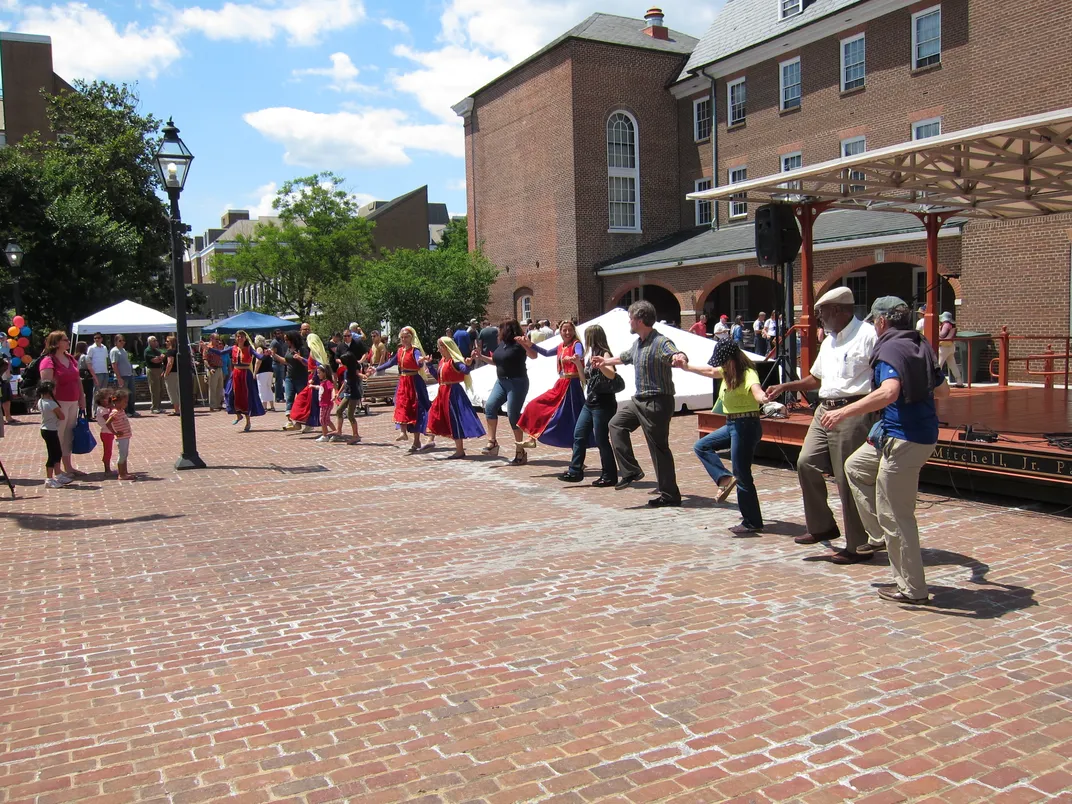
/https://tf-cmsv2-smithsonianmag-media.s3.amazonaws.com/filer/de/be/debe64d8-5116-4cfd-a1c5-f4ced59d4ab7/arev_oom_2017_ezerum_close-up.jpeg)
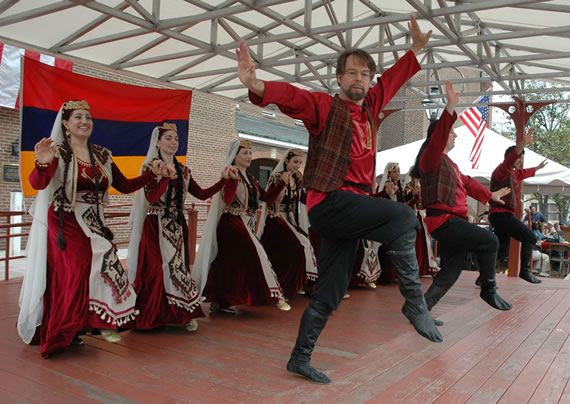
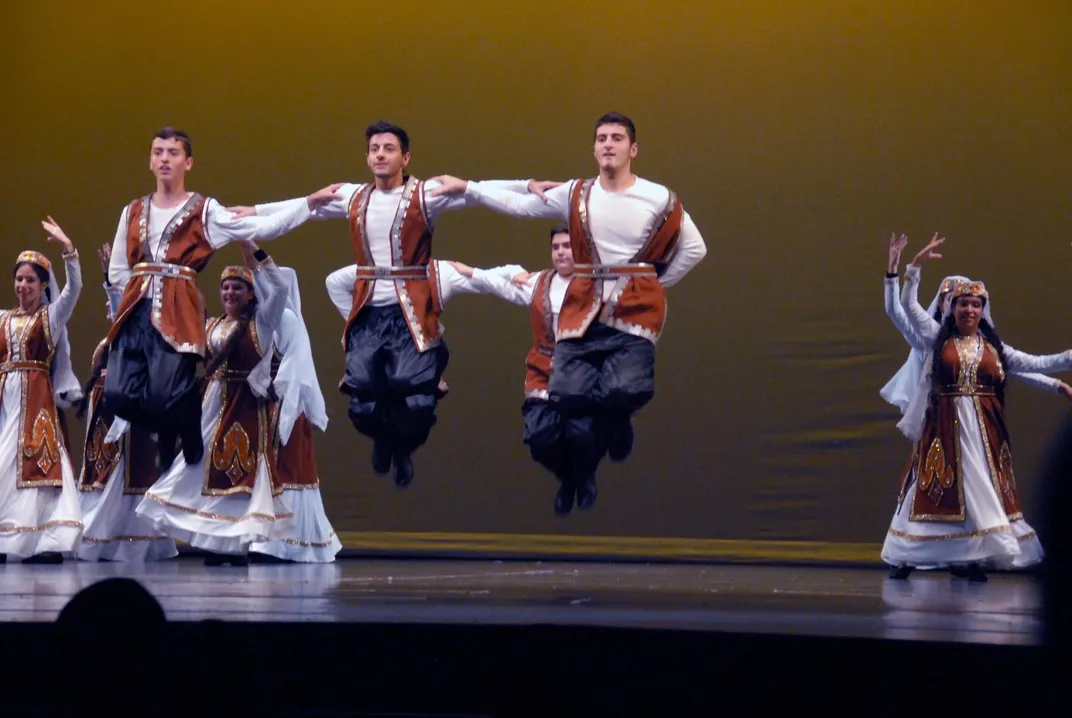

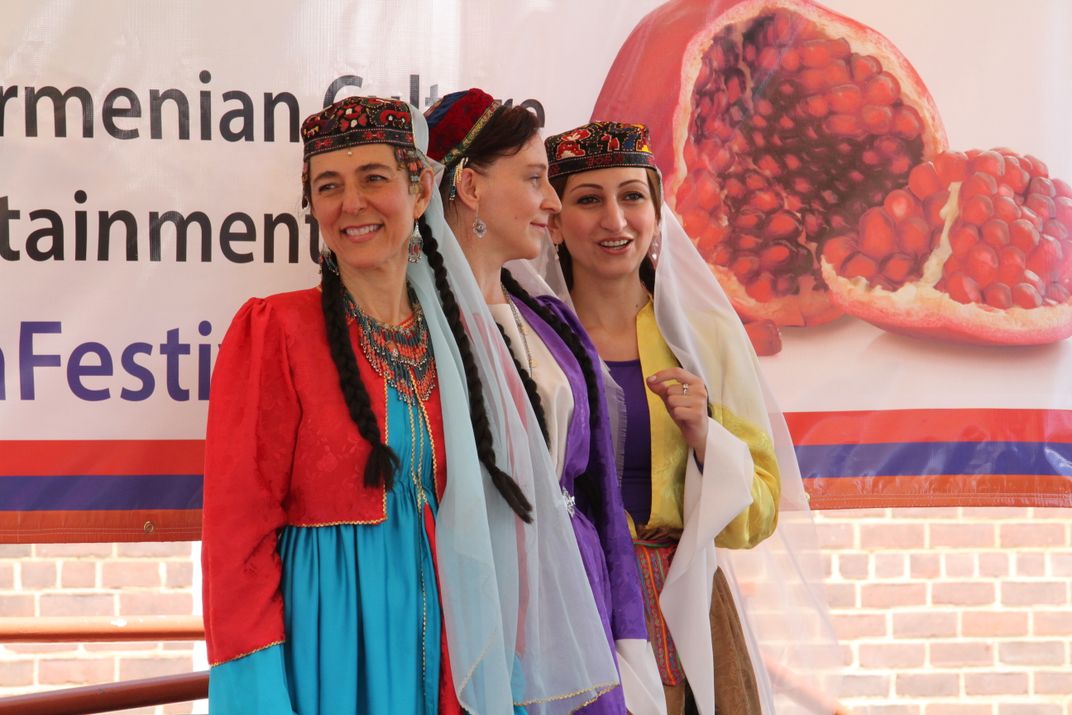
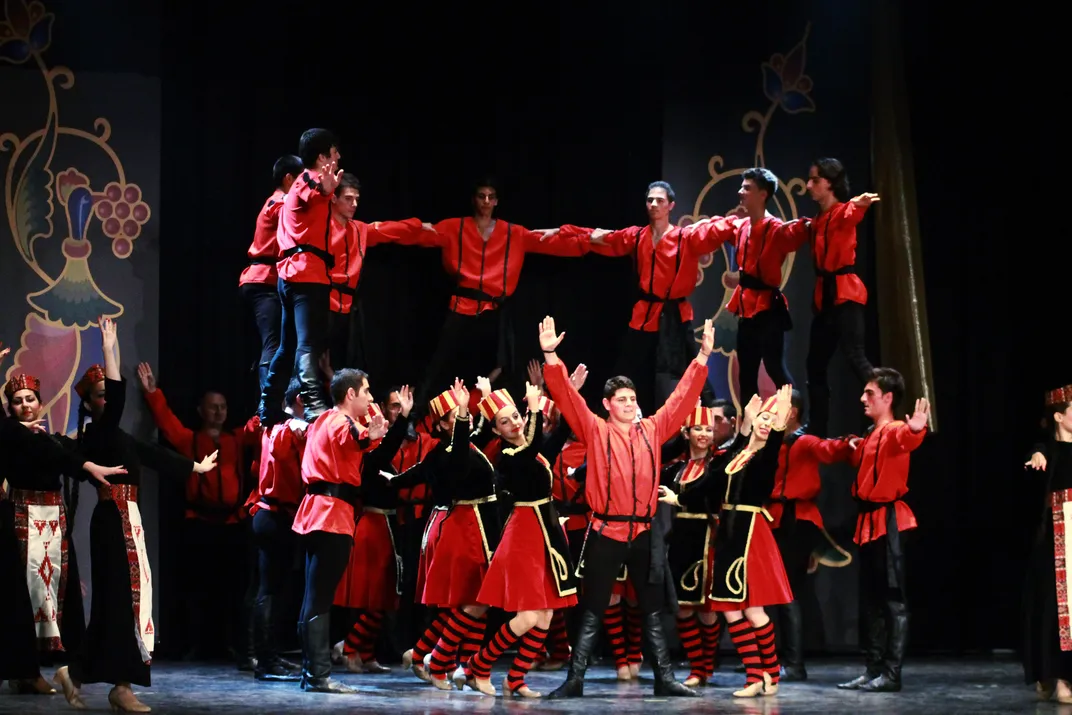
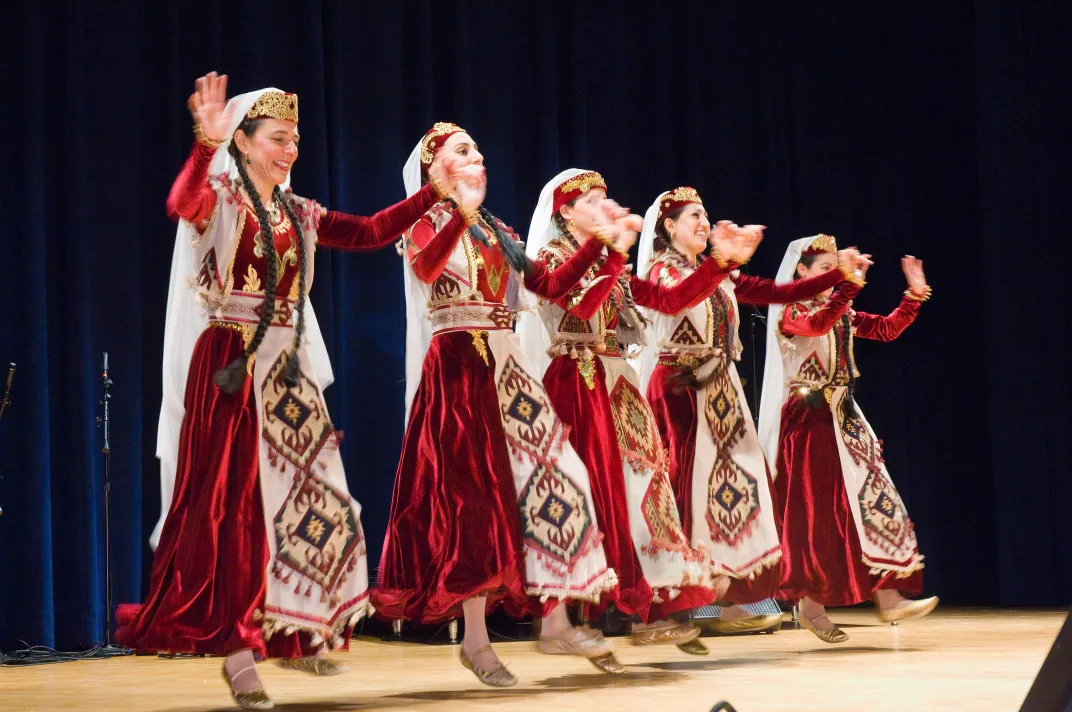




/https://tf-cmsv2-smithsonianmag-media.s3.amazonaws.com/accounts/headshot/RogerCatlin_thumbnail.png)